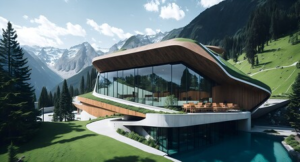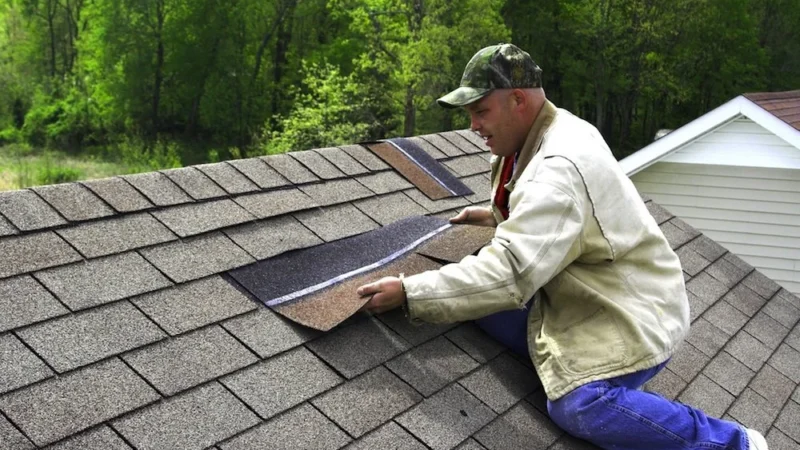Roofing Designs to Match Your Home’s Style
Anderson Roofing and Exteriors can allow homeowners to express their personalities and create stylish exterior accents. They can also help protect the home and people from weather elements like wind, rain, and snow.
Almost any roof type can withstand heavy snow loads, but the most important factor is selecting the right material for the climate where it will be installed.

The Dutch Gable Roof is the ultimate combination roof – it adds both style and functionality with a small gable roofline atop a hip roof. It can be built with various materials and provides extra attic space and excellent ventilation.
It also serves as a natural displacement system for water and snow since the angled peak allows precipitation to slide off. Pros: They’re easy to build and a great choice for homeowners looking for a cost-effective option with an attractive appearance.
A Jerkinhead is a unique variation on the gable roof in many traditional Dutch buildings. It looks like an open gable roof with a small covering at the very top that flares into two small hips. Pros: They’re a popular choice for homeowners who want to expand, as they can offer more space within the loft without altering the structure or aesthetics of the roof.
The jerkinhead roof is one of the oldest roofing designs in existence. It was used during the medieval era throughout central Europe and in Denmark, and it grew in popularity again during the late 1800s and early 1900s for use on bungalows and cottage-style homes. It also caught on in the United States when Gilbert Stanley Underwood, who designed park lodges for the Utah Parks Company, used jerkinhead roofs on many of his rustic designs.
Known for its distinctive trapezoidal gables, the jerkinhead roof has a very old-world appeal. It is also called the clipped gable, half hip, English hip, snub gable, and shredded roof.
It is more complex than other roof styles and will require a contractor familiar with its framing. However, this type of roof does have its positives. For example, it offers good wind resistance compared to other types of roofs. Because the roof’s peaks have flattish curves and gentle slopes, it is less prone to damage from high winds. It’s also an excellent choice for homeowners living in a setting prone to extreme weather. This is because the design of the jerkinhead roof will ensure that the structure can endure the elements for years to come.
Gable roofs are simple, classic, and attractive. This roofing style is typically found in residential homes and can be adapted to fit many different styles of architecture. It can also be paired with dormers to add an extra architectural element to the house.
The slope of a gable roof is naturally conducive to strong drainage. This means that water and snow will easily slide off the roof rather than hanging around and causing damage to shingles or attracting pests. Additionally, gable roofs have steeper slopes than other popular roofing styles, which means they can support dormers and other extensions without issue.
Homeowners can choose from various gable roofs, including side, cross, front, and box gables. These roofs are all very similar, but each has a unique characteristic that sets it apart. For example, the side gable roof features two even panels that meet at a triangular section in the middle of the roof. The triangular area can be left open (as a side-gable roof) or closed to form a boxed gable. The gambrel roof is another variation on the gable, featuring a pair of angled slopes that rise to the ridge of the roof.
Dormer roofs have a unique architectural style that combines form and function. This design can add light and space to an attic or loft while enhancing a home’s visual appeal. It comes in various types and designs, making it an excellent option for any home.
The most common type of dormer roof is a gabled dormer, which has one peak and two slopes. Another popular type is a hipped dormer, which features three sloping planes that converge at the ridge. Finally, a gambrel dormer has a roof at the apex and slopes below, creating a triangular area ideal for a window or vent.
If you are considering adding a dormer to your home, it is important to consult with an experienced roofing contractor first to ensure the roof structure can support it. Additionally, you must apply for a permit, which can take a few weeks or months to complete, before starting the project. It is also important to note that this type of project may void existing roof warranties, so it’s best to work with a professional to avoid any potential issues. Once the permits have been obtained, your contractor will construct the dormer frame and sheathing simultaneously as the primary roof.
The Saltbox Roof is a distinctive roof style that has one side that is longer than the other. This gives it a distinct slant that makes it easy to identify. The name comes from these roofs resembling the wooden boxes. The sloping shape also allows snow to slide off the roof, a useful feature in winter.
The sharp sloping sides of the Saltbox Roof are what make it ideal for northern areas that see lots of rain and snowfall throughout the year. This roof design discourages rain and snow from accumulating on the roof, which helps prevent the formation of ice dams.
This is a simple roof design that is easy to construct. It requires less framing material than a traditional gable roof and can be built quickly by a professional carpenter or roofing contractor.
However, the sloping nature of a Saltbox roof may result in a slanted interior ceiling that might only be ideal for some. Additionally, the slanting roofline can limit natural light in rooms in the rear of the building. This might necessitate the need for additional artificial lighting in these spaces.
Butterfly roofs, V-roofs, or inverted gable roofs are popular for modern, Eco-friendly, and tropical home designs. These unique roofs are designed with two sides that resemble a pair of wings lifted, and they can be found in homes across the country. These distinctive roofs are often paired with large windows that let in lots of natural light and create a spacious, airy feel inside the house.
The butterfly roof design makes it easy to add additional space for living or storage areas. However, this roof style can be difficult to maintain due to its unique shape. Keeping the gutters and downspouts clean is important to avoid any water pools or leaks.
A butterfly roof can be difficult to inspect from the ground level, so that any issues may go unnoticed for long periods. This can lead to costly repair bills and moisture issues. Fortunately, this can be avoided by regularly visiting the roof and inspecting the condition of the gutters and downspouts. Using a waterproof roofing system is also advisable to protect the structure against heavy rainfall and snowfall.
Sawtooth roofs were developed to provide sufficient lighting inside interior spaces before the widespread use of electric lighting. They aim to harness ‘daylighting,’ a specific set of building tactics and procedures that maximize the positive impacts (primarily light and warmth) of allowing sunlight into a structure while minimizing issues such as glare and overheating. Sawtooth roof buildings became less frequent as artificial lighting grew commonplace, but they have reemerged recently with a renewed emphasis on energy conservation.
They feature a series of ridges with glass panels that allow ample herbal mild to flood into large interior spaces, and they also block harmful UV rays. This roof is generally seen in old factories, and it may be a good choice for a contemporary residence that calls for a lot of natural light.
However, these roofs are usually expensive to build and require a lot of materials. They are also prone to leakage because of their steep slopes and the numerous connections. Moreover, they aren’t suited for regions that experience intense rain or snowfall. This kind of roof is ideal for locations with moderate weather conditions.





